Welcome to our blog where we take to the skies and explore the marvels of aviation! Today, we embark on a thrilling journey as we delve into the realm of the Top Biggest Aircraft in the World. From titans of the sky that push the boundaries of engineering to behemoths that defy gravity itself, join us as we uncover the fascinating stories behind these aerial giants. Whether you’re an aviation enthusiast, a curious traveller, or simply intrigued by the wonders of flight, prepare to be captivated by the sheer scale and ingenuity of these magnificent flying machines. Let’s soar into the skies together and discover the world’s largest aircraft like never before!
Airbus A380
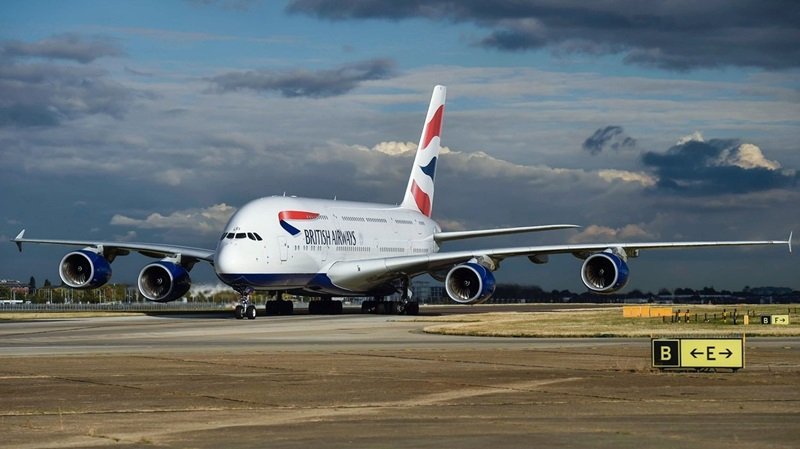
The Airbus A380 is a colossal feat of engineering and a true giant of the skies. It stands as the largest passenger aircraft in the world, offering unparalleled capacity and luxury to travelers across the globe.
History and Development – Top Biggest Aircraft
The idea of the A380 was conceived in the late 1980s as airlines began to seek larger capacity options to meet the growing demand for air travel. Airbus officially launched the A380 project in December 2000, with the aim of revolutionizing long-haul flights.
Design and Features
The A380 boasts a distinctive double-deck design, allowing for spacious cabins and innovative layouts. Its wingspan stretches over 79 meters, providing exceptional stability and lift during flight.
Technical Specifications
The Airbus A380 can accommodate up to 850 passengers in a single-class configuration, although typical layouts range from 500 to 600 passengers across three classes.
Powered by four high-thrust engines, the A380 delivers remarkable performance, with each engine generating over 70,000 pounds of thrust.
With a maximum range of approximately 8,000 nautical miles, the A380 is capable of covering vast distances without the need for refueling. It cruises at a speed of around 560 mph, ensuring swift and efficient travel.
Interior Comfort and Amenities
Passengers aboard the A380 are treated to unparalleled comfort and luxury, with spacious seating arrangements, state-of-the-art entertainment systems, and exquisite dining options.
Operational Use and Airlines
Several major airlines, including Emirates, Singapore Airlines, and Lufthansa, have incorporated the A380 into their fleets, offering passengers an unforgettable flying experience.
Economic Impact
Despite its impressive capabilities, the A380 has faced challenges in terms of profitability, with some airlines struggling to fill its vast number of seats consistently. Top Biggest Aircraft
Environmental Considerations
While the A380 is undoubtedly a marvel of modern aviation, its environmental impact has raised concerns, particularly regarding fuel consumption and emissions.
Maintenance and Upkeep
Maintaining the A380 requires meticulous attention to detail, given its size and complexity. Regular inspections and servicing are essential to ensure its continued airworthiness.
Notable Incidents and Challenges
Over the years, the A380 has encountered various technical issues and incidents, though none have compromised its overall safety record significantly.
Future Prospects
Despite facing some setbacks, the A380 continues to serve as a symbol of innovation and progress in the aviation industry. Its future may involve further enhancements and modifications to improve efficiency and sustainability.
Comparison with Other Aircraft
In comparison to other large aircraft such as the Boeing 747 and the upcoming Boeing 777X, the A380 offers unparalleled passenger capacity and comfort, making it a preferred choice for long-haul flights.
Read About: Top Best Largest Cities All Time In The World
Boeing Dreamlifter – Top Biggest Aircraft
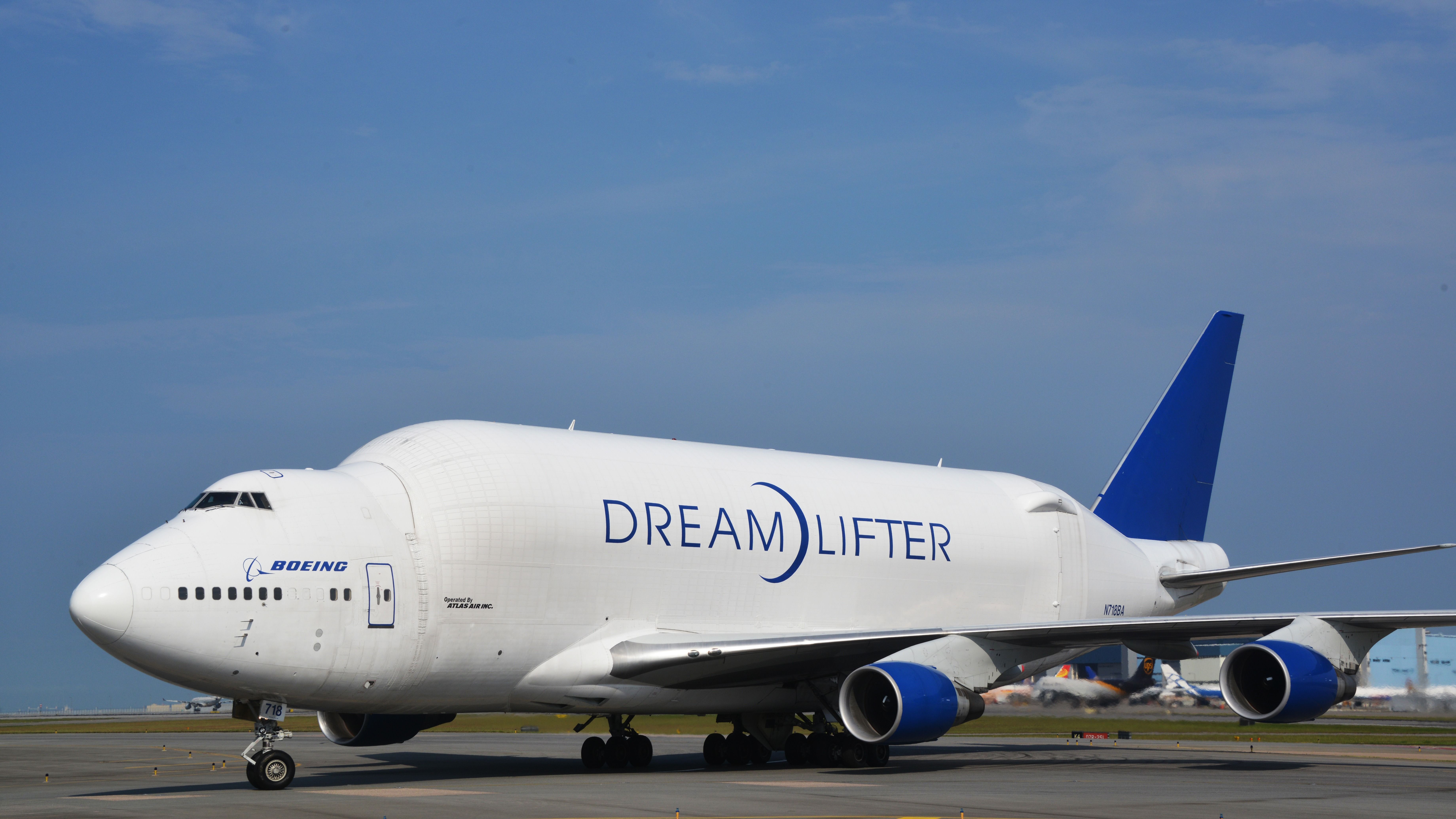
The Boeing Dreamlifter stands out as one of the largest and most distinctive cargo aircraft in the world. Designed specifically to transport oversized components of Boeing’s Dreamliner aircraft, this behemoth plays a crucial role in the aerospace industry’s logistics.
History and Development
The concept of the Dreamlifter emerged as Boeing sought an efficient solution for transporting the large components of its Dreamliner aircraft, such as wings and fuselage sections, from suppliers around the world to its assembly plants. Boeing modified existing Boeing 747-400 aircraft to create the Dreamlifter, providing it with a unique bulging fuselage capable of accommodating massive cargo.
Design and Features
The most striking feature of the Dreamlifter is its enlarged fuselage, which allows it to carry bulky cargo with ease. This modification enables the aircraft to transport large sections of the Dreamliner, including wings and fuselage pieces, efficiently and securely.
Technical Specifications
The Dreamlifter boasts an impressive cargo volume of approximately 65,000 cubic feet, making it capable of carrying oversized payloads that traditional cargo aircraft cannot accommodate. Its cargo hold measures over 28 feet in diameter and 65 feet in length, providing ample space for transporting large components.
Powered by four General Electric CF6-80C2 engines, the Dreamlifter delivers robust performance, ensuring reliable and efficient operations even when carrying heavy loads over long distances.
With a maximum range of around 4,800 nautical miles, the Dreamlifter can traverse vast distances without the need for refueling, making it well-suited for international transport missions. It maintains a cruising speed of approximately 0.82 Mach, allowing for timely deliveries of critical components.
Operational Use
The Dreamlifter plays a pivotal role in Boeing’s global supply chain, facilitating the seamless transportation of Dreamliner components from suppliers in various countries to assembly plants in the United States. Its ability to transport oversized cargo efficiently has streamlined the production process for the Dreamliner program. Top Biggest Aircraft
Economic Impact
While primarily designed for internal use within Boeing’s operations, the Dreamlifter also occasionally performs outsourced cargo operations for other organizations. Its efficiency and reliability contribute to cost savings and operational efficiencies for both Boeing and its customers.
Environmental Considerations
Despite its substantial size and payload capacity, the Dreamlifter incorporates advanced technologies to minimize its environmental footprint. Engine efficiency enhancements and aerodynamic improvements help reduce fuel consumption and emissions during flight.
Maintenance and Upkeep
Ensuring the airworthiness of the Dreamlifter requires diligent maintenance and upkeep, given its specialized design and operational requirements. Boeing employs rigorous maintenance procedures to keep the aircraft in peak condition, ensuring its continued reliability and safety.
Notable Incidents and Challenges
While the Dreamlifter has maintained a strong safety record throughout its operational history, it has encountered occasional challenges, including weather-related incidents and operational issues. However, Boeing and its partners have implemented measures to mitigate risks and enhance safety.
Future Prospects
As Boeing continues to innovate and evolve its aircraft programs, the Dreamlifter is expected to remain a vital asset in the company’s logistics infrastructure. With ongoing advancements in aerospace technology, the Dreamlifter may undergo further enhancements to improve its performance and efficiency.
Comparison with Other Cargo Aircraft
In comparison to traditional cargo aircraft such as the Antonov An-124 and the Airbus Beluga, the Dreamlifter offers a unique combination of payload capacity and versatility specifically tailored to the transportation needs of the aerospace industry.
Read About: Top Best Big Cities All Time In The World
Boeing 777F
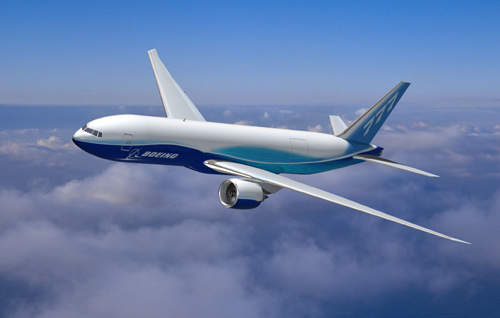
The Boeing 777F, often referred to as the “Triple Seven Freighter,” stands as one of the largest and most advanced cargo aircraft in the world. Developed by Boeing as part of the highly successful 777 family, the 777F offers unparalleled cargo capacity and efficiency, catering to the growing demands of global freight transportation.
History and Development – Top Biggest Aircraft
Boeing commenced the development of the 777F in response to the increasing need for reliable and efficient freighter aircraft in the global cargo market. Drawing upon the success and advanced technologies of the 777 passenger variants, the 777F was specifically designed to meet the unique requirements of cargo operators worldwide.
Design and Features
The Boeing 777F features a robust and versatile design optimized for freight transportation. Its spacious cargo hold, with a volume of over 25,000 cubic feet, can accommodate a wide range of cargo, including oversized and irregularly shaped items. The aircraft’s large cargo door, located on the forward fuselage, enables swift and efficient loading and unloading operations.
Technical Specifications
The 777F boasts impressive dimensions, with a wingspan exceeding 199 feet and a length of approximately 209 feet. It can carry a maximum payload of over 224,000 kilograms (or 490,000 pounds), making it suitable for transporting a diverse range of goods, from perishable goods to heavy machinery.
Powered by two high-performance engines, typically General Electric GE90-110B1L engines, the 777F delivers exceptional thrust and efficiency, ensuring reliable and cost-effective operations across long-haul routes.
With a maximum range of approximately 4,970 nautical miles (or 9,200 kilometers), the 777F is capable of reaching destinations across continents with minimal fuel stops. Its advanced aerodynamics and fuel-efficient engines contribute to reduced operating costs and environmental impact.
Operational Use and Airlines
The Boeing 777F has been embraced by numerous cargo operators worldwide, including leading carriers such as FedEx Express, Emirates SkyCargo, and Qatar Airways Cargo. These airlines leverage the aircraft’s superior payload capacity and range to serve diverse markets and meet evolving customer demands.
Economic Impact
The introduction of the 777F has significantly impacted the global air cargo industry, offering operators enhanced capabilities to transport goods efficiently and cost-effectively. Its versatility and reliability have contributed to increased productivity and profitability for cargo airlines, driving economic growth and trade facilitation on a global scale. Top Biggest Aircraft
Environmental Considerations
Boeing has incorporated various eco-friendly technologies and initiatives into the design and operation of the 777F to minimize its environmental footprint. These include advanced aerodynamics, lightweight materials, and fuel-efficient engines, which collectively reduce fuel consumption and emissions during flight.
Maintenance and Upkeep
Ensuring the airworthiness and reliability of the Boeing 777F requires comprehensive maintenance and upkeep procedures. Cargo operators adhere to rigorous maintenance schedules and safety protocols to ensure the aircraft’s continued performance and compliance with regulatory standards.
Notable Incidents and Challenges
While the Boeing 777F has maintained an excellent safety record, it has encountered occasional technical issues and operational challenges. However, prompt and effective responses from manufacturers and operators have mitigated any significant disruptions to operations.
Future Prospects
As the global demand for air cargo continues to grow, the Boeing 777F is poised to play a pivotal role in shaping the future of freight transportation. Ongoing advancements in technology and operational efficiency are expected to further enhance the aircraft’s capabilities and competitiveness in the years ahead.
Comparison with Other Aircraft
Compared to other large freighter aircraft such as the Airbus A330F and the Boeing 747-8F, the 777F offers a compelling combination of payload capacity, range, and fuel efficiency. Its modern design and advanced features make it a preferred choice for cargo operators seeking optimal performance and reliability.
Read About: Top Best Big Cities All Time In The World
Boeing – Top Biggest Aircraft
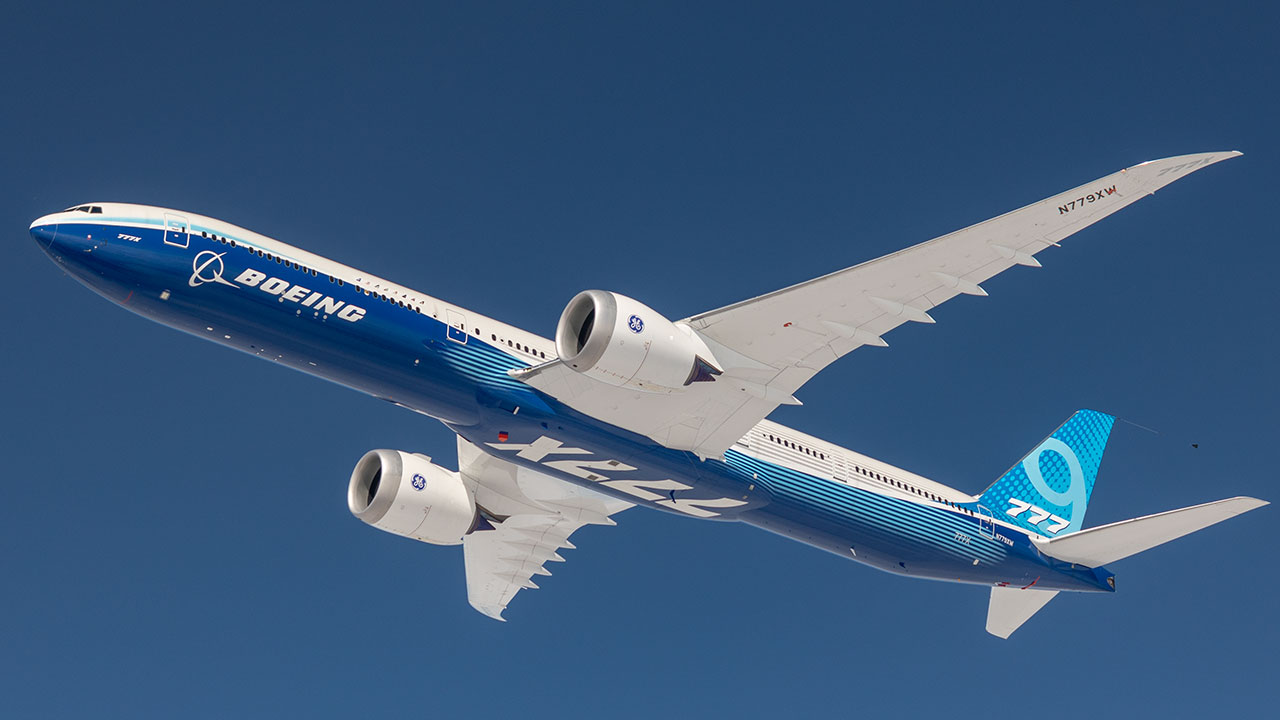
The Boeing 747, often referred to as the “Queen of the Skies,” is an iconic aircraft that revolutionized long-haul air travel upon its introduction in 1970. Renowned for its distinctive humpbacked design and immense size, the Boeing 747 remains one of the most recognizable aircraft in the world.
History and Development
Boeing initiated the development of the 747 in the late 1960s in response to the growing demand for larger passenger aircraft. Its inaugural flight took place on February 9, 1969, marking a significant milestone in aviation history.
Design and Features
The Boeing 747 features a unique double-deck design, with the upper deck extending along the entire length of the fuselage. This layout provides ample space for passengers and allows for various seating configurations, including first-class lounges and spacious economy cabins.
Technical Specifications
The Boeing 747 is capable of accommodating up to 660 passengers in a typical three-class configuration. Its wingspan measures approximately 64 meters, and it has a maximum takeoff weight of over 440 tons.
Powered by four high-bypass turbofan engines, the Boeing 747 delivers impressive thrust and performance, allowing it to operate efficiently on long-haul routes.
With a maximum range of over 7,700 nautical miles, the Boeing 747 can traverse vast distances without the need for refueling. It cruises at a speed of approximately 570 mph, ensuring swift and comfortable journeys. Top Biggest Aircraft
Interior Comfort and Amenities
Passengers aboard the Boeing 747 are treated to a host of amenities, including spacious seating, in-flight entertainment systems, and gourmet dining options. The aircraft’s expansive interior creates a sense of luxury and comfort for travelers.
Operational Use and Airlines
The Boeing 747 has been a mainstay in the fleets of numerous airlines worldwide, serving a diverse range of routes and destinations. Major carriers such as British Airways, Lufthansa, and Korean Air have all operated the Boeing 747 at various points in its history.
Economic Impact
Over the years, the Boeing 747 has played a significant role in shaping the global aviation industry, facilitating the growth of international travel and trade. Its efficiency and reliability have made it a preferred choice for airlines operating long-haul flights.
Environmental Considerations
While advancements in technology have improved the fuel efficiency of the Boeing 747, concerns remain regarding its environmental impact, particularly in terms of emissions and noise pollution.
Maintenance and Upkeep
Maintaining the Boeing 747 requires rigorous maintenance procedures to ensure its continued airworthiness and safety. Regular inspections, repairs, and upgrades are essential to keep the aircraft in optimal condition.
Notable Incidents and Challenges
Throughout its decades-long service history, the Boeing 747 has encountered various technical issues and incidents, though its overall safety record remains strong.
Future Prospects
As newer, more fuel-efficient aircraft enter the market, the future of the Boeing 747 remains uncertain. However, its legacy as a pioneering aircraft and symbol of aviation excellence is sure to endure for generations to come.
Comparison with Other Aircraft
In comparison to other large aircraft such as the Airbus A380 and the Boeing 777, the Boeing 747 offers a unique blend of capacity, range, and versatility, making it a preferred choice for airlines operating long-haul routes.
Read About: Top Best Tech Companies All Time In The World
Airbus BelugaXL
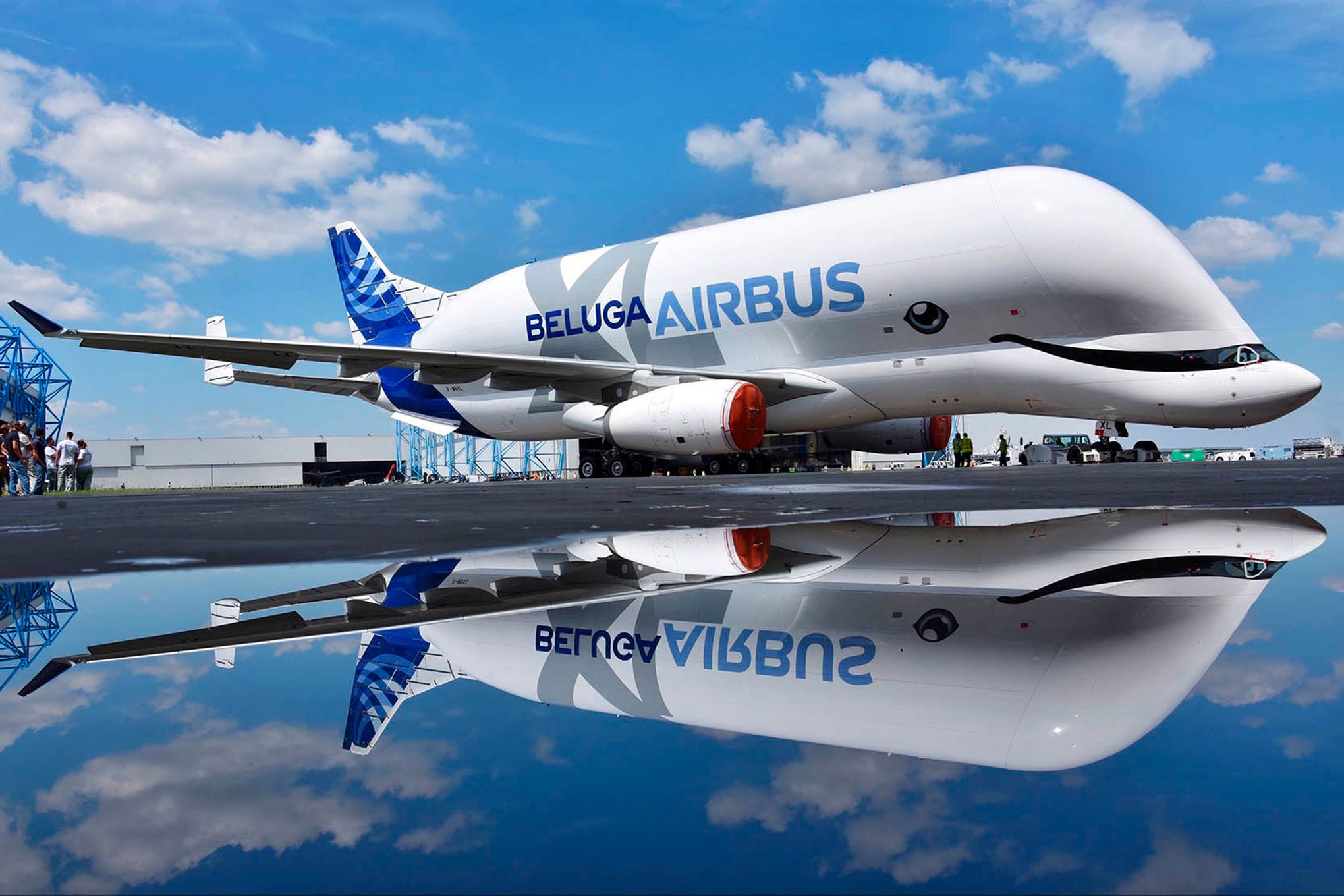
The Airbus BelugaXL is a unique cargo aircraft specifically designed to transport oversized cargo components, including fuselage sections, wings, and other aircraft parts, between Airbus manufacturing facilities across Europe. With its distinctive bulbous fuselage and massive cargo hold, the BelugaXL stands out as one of the largest and most recognizable aircraft in the world.
History and Development – Top Biggest Aircraft
The development of the BelugaXL was initiated by Airbus to address the increasing demand for transporting large aerospace components between its production sites. Building upon the success of the previous BelugaST model, Airbus launched the BelugaXL program in 2014, aiming to enhance cargo capacity and operational efficiency.
Design and Features
The BelugaXL features a modified version of the Airbus A330 aircraft platform, with a widened fuselage and reinforced cargo hold to accommodate oversized payloads. Its unique shape, resembling that of a beluga whale, maximizes cargo volume while maintaining aerodynamic efficiency.
Technical Specifications
With a length of approximately 63 meters and a wingspan of over 60 meters, the BelugaXL boasts an impressive cargo capacity of 51 metric tons. Its cavernous cargo hold measures 8 meters wide and 8 meters tall, allowing for the transportation of large aerospace components with ease.
Powered by two Rolls-Royce Trent 700 engines, the BelugaXL delivers robust performance and reliability, ensuring efficient operations over long distances.
The BelugaXL has a maximum range of around 2,200 nautical miles and cruises at a speed of approximately 460 knots, enabling rapid transport of critical components between Airbus facilities.
Operational Use and Airlines
The BelugaXL serves as a vital link in Airbus’s logistical chain, transporting essential components for various aircraft programs, including the A320, A350, and A380. It operates scheduled flights between Airbus production sites in France, Germany, Spain, and the United Kingdom. Top Biggest Aircraft
Economic Impact
By streamlining the transportation of oversized cargo components, the BelugaXL contributes to increased efficiency and cost savings in Airbus’s manufacturing processes. Its ability to transport large volumes of cargo in a single trip minimizes the need for multiple shipments, reducing both time and expenses.
Environmental Considerations
While the BelugaXL’s primary focus is on cargo transportation rather than passenger travel, Airbus has implemented various measures to enhance its environmental performance, including the use of fuel-efficient engines and lightweight materials.
Maintenance and Upkeep
Ensuring the airworthiness and reliability of the BelugaXL requires regular maintenance and inspections to identify and address any potential issues. Airbus employs a dedicated team of engineers and technicians to oversee the maintenance of its fleet of BelugaXL aircraft.
Notable Incidents and Challenges
Since entering service in 2019, the BelugaXL has maintained a strong safety record, with no significant incidents reported. However, the logistics of transporting oversized cargo present unique challenges, including loading and unloading procedures and route planning.
Future Prospects
As Airbus continues to expand its aircraft production capabilities, the demand for transporting oversized cargo components is expected to grow. The BelugaXL’s versatility and efficiency position it well to meet these evolving needs and play a crucial role in Airbus’s future success.
Comparison with Other Aircraft
In comparison to other cargo aircraft such as the Boeing 747 Dreamlifter and the Antonov An-225 Mriya, the BelugaXL offers a unique combination of payload capacity, cargo volume, and operational flexibility, making it an indispensable asset for Airbus’s manufacturing operations.
Read About: Top Best Programming Languages All Time In The World
Boeing Sonic Cruiser – Top Biggest Aircraft
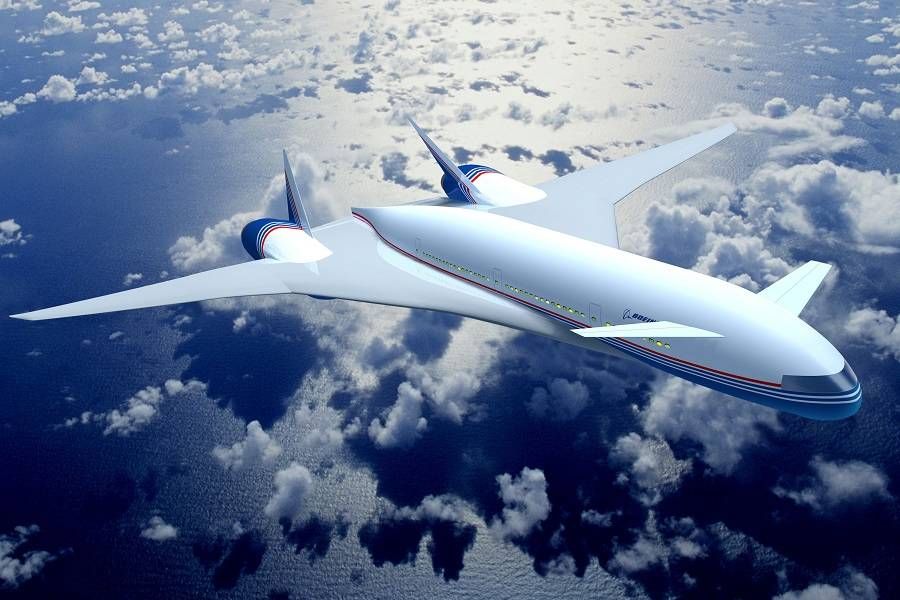
The Boeing Sonic Cruiser was a concept aircraft developed by Boeing in the early 2000s with the aim of revolutionizing air travel by achieving unprecedented speeds. Although it was never put into production, the Sonic Cruiser remains a fascinating chapter in aviation history.
History and Development
Boeing unveiled the Sonic Cruiser concept in 2001, proposing a radical departure from conventional aircraft design. The aircraft was designed to fly at speeds approaching the speed of sound, significantly reducing travel times for long-haul flights.
Design and Features
The Boeing Sonic Cruiser featured a unique aerodynamic design optimized for high-speed flight. Its distinctive swept-back wings and streamlined fuselage were intended to minimize drag and enhance fuel efficiency, allowing for faster travel with reduced environmental impact.
Technical Specifications
The Sonic Cruiser was projected to fly at speeds of Mach 0.98, nearly the speed of sound, compared to typical commercial aircraft speeds of Mach 0.85. This increased speed would have enabled significantly shorter flight durations on long-distance routes. Top Biggest Aircraft
While specific details regarding the Sonic Cruiser’s range and passenger capacity were never finalized, Boeing aimed to offer competitive range and seating options comparable to existing wide-body aircraft.
Operational Use and Airlines
Despite generating significant interest from airlines and the aviation industry, Boeing ultimately shelved plans for the Sonic Cruiser in favor of developing more fuel-efficient and economically viable aircraft models, such as the Boeing 787 Dreamliner.
Economic Considerations
One of the primary challenges facing the Sonic Cruiser concept was its projected fuel consumption and operating costs. The aircraft’s high-speed capabilities would have required substantial fuel expenditures, potentially impacting its overall profitability.
Environmental Impact
While the Sonic Cruiser promised faster travel times, concerns were raised regarding its environmental footprint, particularly in terms of fuel consumption and emissions. This aspect likely factored into Boeing’s decision to prioritize more fuel-efficient aircraft designs.
Future Prospects
Although the Sonic Cruiser concept was ultimately abandoned, its legacy lives on in the ongoing pursuit of innovation and efficiency in commercial aviation. Lessons learned from the Sonic Cruiser project continue to inform the development of future aircraft designs.
Comparison with Other Aircraft
In contrast to traditional aircraft models focused on efficiency and range, the Sonic Cruiser represented a bold departure with its emphasis on speed and reduced travel times. However, its ambitious goals ultimately proved challenging to realize in practice.
Read About: Top Best Movies All Time In The World
Boeing 747

The Boeing 747, often referred to as the “Queen of the Skies,” is an iconic aircraft that revolutionized long-haul air travel upon its introduction in 1970. Renowned for its distinctive humpbacked design and immense size, the Boeing 747 remains one of the most recognizable aircraft in the world.
History and Development – Top Biggest Aircraft
Boeing initiated the development of the 747 in the late 1960s in response to the growing demand for larger passenger aircraft. Its inaugural flight took place on February 9, 1969, marking a significant milestone in aviation history.
Design and Features
The Boeing 747 features a unique double-deck design, with the upper deck extending along the entire length of the fuselage. This layout provides ample space for passengers and allows for various seating configurations, including first-class lounges and spacious economy cabins.
Technical Specifications
The Boeing 747 is capable of accommodating up to 660 passengers in a typical three-class configuration. Its wingspan measures approximately 64 meters, and it has a maximum takeoff weight of over 440 tons.
Powered by four high-bypass turbofan engines, the Boeing 747 delivers impressive thrust and performance, allowing it to operate efficiently on long-haul routes.
With a maximum range of over 7,700 nautical miles, the Boeing 747 can traverse vast distances without the need for refueling. It cruises at a speed of approximately 570 mph, ensuring swift and comfortable journeys.
Interior Comfort and Amenities
Passengers aboard the Boeing 747 are treated to a host of amenities, including spacious seating, in-flight entertainment systems, and gourmet dining options. The aircraft’s expansive interior creates a sense of luxury and comfort for travelers. Top Biggest Aircraft
Operational Use and Airlines
The Boeing 747 has been a mainstay in the fleets of numerous airlines worldwide, serving a diverse range of routes and destinations. Major carriers such as British Airways, Lufthansa, and Korean Air have all operated the Boeing 747 at various points in its history.
Economic Impact
Over the years, the Boeing 747 has played a significant role in shaping the global aviation industry, facilitating the growth of international travel and trade. Its efficiency and reliability have made it a preferred choice for airlines operating long-haul flights.
Environmental Considerations
While advancements in technology have improved the fuel efficiency of the Boeing 747, concerns remain regarding its environmental impact, particularly in terms of emissions and noise pollution.
Maintenance and Upkeep
Maintaining the Boeing 747 requires rigorous maintenance procedures to ensure its continued airworthiness and safety. Regular inspections, repairs, and upgrades are essential to keep the aircraft in optimal condition.
Notable Incidents and Challenges
Throughout its decades-long service history, the Boeing 747 has encountered various technical issues and incidents, though its overall safety record remains strong.
Future Prospects
As newer, more fuel-efficient aircraft enter the market, the future of the Boeing 747 remains uncertain. However, its legacy as a pioneering aircraft and symbol of aviation excellence is sure to endure for generations to come.
Comparison with Other Aircraft
In comparison to other large aircraft such as the Airbus A380 and the Boeing 777, the Boeing 747 offers a unique blend of capacity, range, and versatility, making it a preferred choice for airlines operating long-haul routes.
Read About: Top Best Mobiles All Time In The World
Stratolaunch – Top Biggest Aircraft
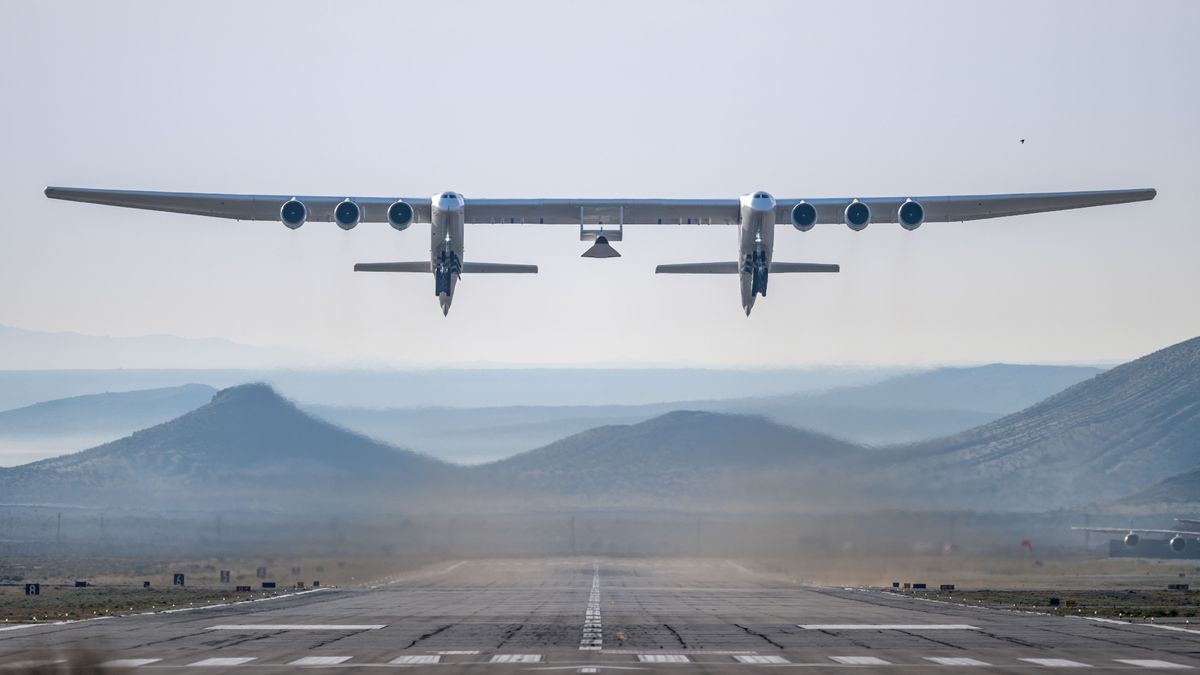
Stratolaunch is an innovative aerospace company founded by Microsoft co-founder Paul G. Allen in 2011. The company’s primary focus is on developing high-altitude launch vehicles and related technologies. The centerpiece of its fleet is the Stratolaunch aircraft, which holds the title of the largest aircraft in the world by wingspan.
History and Development
The development of the Stratolaunch aircraft began in 2011, with the goal of creating a platform capable of air-launching space vehicles into orbit. The project was initiated to provide a more flexible and cost-effective means of accessing space, compared to traditional ground-based rocket launches.
Design and Features
The Stratolaunch aircraft features a unique twin-fuselage design with a wingspan of 385 feet (117 meters), making it the largest wingspan of any aircraft ever built. This massive wingspan allows the aircraft to serve as a flying launch pad for rockets, satellites, and other payloads.
Technical Specifications
With a maximum takeoff weight of 1.3 million pounds (589,670 kilograms), the Stratolaunch aircraft is capable of carrying multiple launch vehicles simultaneously, providing unparalleled flexibility for space missions.
Powered by six Pratt & Whitney PW4056 engines, originally sourced from Boeing 747 aircraft, the Stratolaunch aircraft is capable of cruising at altitudes of up to 35,000 feet (10,668 meters) and speeds of over 500 miles per hour (805 kilometers per hour). Top Biggest Aircraft
Operational Use
The primary purpose of the Stratolaunch aircraft is to serve as a mobile launch platform for deploying satellites and other payloads into orbit. By air-launching rockets at high altitudes, the aircraft eliminates the need for costly ground infrastructure and provides access to a wider range of launch trajectories.
Economic Impact
Stratolaunch aims to revolutionize the space launch industry by offering more affordable and efficient access to space. By leveraging air-launch technology, the company seeks to reduce the cost and complexity of launching payloads into orbit, opening up new opportunities for commercial space exploration.
Environmental Considerations
While the Stratolaunch aircraft consumes a significant amount of fuel during takeoff and ascent, its air-launch approach offers potential environmental benefits compared to traditional ground-based rocket launches. By minimizing ground-based infrastructure and reducing the need for complex launch facilities, the Stratolaunch system could help mitigate the environmental impact of space exploration.
Future Prospects
As the Stratolaunch aircraft continues to undergo testing and development, its potential applications in the space launch industry are vast. From deploying satellites and conducting scientific research to supporting future space missions, the aircraft represents a significant step forward in the quest for affordable and accessible space exploration.
Comparison with Other Aircraft
In terms of sheer size and capabilities, the Stratolaunch aircraft stands apart from traditional commercial and military aircraft. Its massive wingspan and air-launch capabilities make it a unique and invaluable asset in the rapidly evolving space launch industry.
Read About: Top Best Market All Time In The World
Airbus A350-900

The Airbus A350-900 is a wide-body, long-range aircraft manufactured by Airbus, one of the leading aircraft manufacturers globally. Designed for efficiency, comfort, and sustainability, the A350-900 is renowned for its advanced technology and innovative features.
History and Development – Top Biggest Aircraft
The development of the Airbus A350-900 began in 2004 as a response to the market demand for a more fuel-efficient and environmentally friendly aircraft. Airbus aimed to compete with Boeing’s 787 Dreamliner and 777 series by introducing a state-of-the-art aircraft with cutting-edge design and performance.
Design and Features
The Airbus A350-900 features a composite fuselage and wings, reducing weight and improving fuel efficiency. Its advanced aerodynamics, along with advanced engines and systems, contribute to its exceptional performance and range.
Technical Specifications
The A350-900 has a length of approximately 67 meters and a wingspan of around 64 meters. It can accommodate up to 440 passengers in a typical three-class configuration, although seating arrangements vary depending on the airline’s preferences.
Powered by two Rolls-Royce Trent XWB engines, the A350-900 delivers impressive performance, with each engine producing around 84,000 pounds of thrust. This enables the aircraft to achieve high speeds and long-range capabilities.
With a maximum range of over 8,000 nautical miles (14,800 kilometers), the Airbus A350-900 is capable of flying non-stop on long-haul routes, connecting distant destinations with ease. Its fuel-efficient design and aerodynamics contribute to reduced operating costs and environmental impact.
Interior Comfort and Amenities
The Airbus A350-900 offers passengers a spacious and comfortable cabin environment, with larger windows, wider seats, and higher ceilings. Advanced lighting systems and noise-reducing technologies enhance the onboard experience, providing a relaxing and enjoyable journey for travelers.
Operational Use and Airlines
Numerous airlines around the world have incorporated the Airbus A350-900 into their fleets, utilizing its range and efficiency for long-haul flights. Major carriers such as Qatar Airways, Singapore Airlines, and Cathay Pacific operate the A350-900 on various routes, catering to both business and leisure travelers.
Economic Impact
The Airbus A350-900 has had a significant impact on the aviation industry, offering airlines a cost-effective solution for operating long-haul routes. Its fuel efficiency and range capabilities have helped carriers reduce operating costs and improve profitability in an increasingly competitive market.
Environmental Considerations
With its fuel-efficient engines and lightweight construction, the Airbus A350-900 is designed to minimize its environmental footprint. Lower fuel consumption and reduced emissions contribute to the aircraft’s overall sustainability, aligning with industry efforts to mitigate climate change. Top Biggest Aircraft
Maintenance and Upkeep
Maintaining the Airbus A350-900 requires rigorous inspection and maintenance procedures to ensure its continued airworthiness and safety. Advanced diagnostic systems and predictive maintenance technologies help airlines optimize maintenance schedules and minimize downtime.
Notable Incidents and Challenges
While the Airbus A350-900 has maintained a strong safety record since its introduction, it has encountered occasional technical issues and operational challenges. However, prompt resolution and continuous improvements have helped address these issues effectively.
Future Prospects
As air travel continues to evolve, the Airbus A350-900 is expected to remain a key player in the long-haul market. Ongoing advancements in technology and design may lead to further enhancements and variants, ensuring the A350 family remains at the forefront of innovation in commercial aviation.
Comparison with Other Aircraft
In comparison to other wide-body aircraft such as the Boeing 787 Dreamliner and the Boeing 777X, the Airbus A350-900 offers superior fuel efficiency, range, and passenger comfort. Its advanced design and technology position it as a preferred choice for airlines seeking long-haul solutions.
Read About: Top Best Luxurious Hotels All Time In The World
Scaled Composites Stratolaunch – Top Biggest Aircraft

The Scaled Composites Stratolaunch is a revolutionary aircraft designed to serve as an airborne launch platform for rockets and other space launch vehicles. Developed by Scaled Composites, a company founded by aerospace engineer Burt Rutan, the Stratolaunch aims to provide cost-effective access to space by launching payloads from high altitudes.
History and Development
The concept for the Stratolaunch aircraft originated from Microsoft co-founder Paul G. Allen’s vision of creating a platform for launching payloads into space more efficiently. Development began in 2011, with the goal of designing an aircraft capable of carrying rockets to high altitudes, where they could be launched into orbit.
Design and Features
The Scaled Composites Stratolaunch features a unique twin-fuselage design with a wingspan of 385 feet (117 meters), making it the largest wingspan of any aircraft ever built. This massive size allows the aircraft to serve as a stable and reliable platform for air-launching rockets and satellites.
Technical Specifications
With a maximum takeoff weight of over 1.3 million pounds (589,670 kilograms), the Stratolaunch aircraft can carry multiple launch vehicles simultaneously. Its large payload capacity and high-altitude launch capabilities make it an ideal platform for a wide range of space missions.
The Stratolaunch aircraft is powered by six Pratt & Whitney PW4056 engines, originally sourced from Boeing 747 aircraft. These engines provide the necessary thrust to lift the aircraft to altitudes of up to 35,000 feet (10,668 meters), where it can release its payload for launch into space.
Operational Use
The primary purpose of the Stratolaunch aircraft is to serve as a mobile launch platform for deploying rockets and other space launch vehicles into orbit. By air-launching payloads from high altitudes, the aircraft eliminates the need for costly ground infrastructure and provides greater flexibility in launch trajectories.
Economic Impact
Scaled Composites aims to revolutionize the space launch industry by offering more affordable and efficient access to space through the Stratolaunch system. By reducing the cost and complexity of space launches, the company hopes to spur innovation and exploration in the commercial space sector.
Environmental Considerations
While the Stratolaunch aircraft consumes a significant amount of fuel during takeoff and ascent, its air-launch approach offers potential environmental benefits compared to traditional ground-based rocket launches. By minimizing ground-based infrastructure and reducing the need for complex launch facilities, the Stratolaunch system could help mitigate the environmental impact of space exploration. Top Biggest Aircraft
Future Prospects
As the Stratolaunch aircraft continues to undergo testing and development, its potential applications in the space launch industry are vast. From deploying satellites and conducting scientific research to supporting future space missions, the aircraft represents a significant step forward in the quest for affordable and accessible space exploration.
Comparison with Other Aircraft
In terms of sheer size and capabilities, the Scaled Composites Stratolaunch stands apart from traditional commercial and military aircraft. Its massive wingspan and air-launch capabilities make it a unique and invaluable asset in the rapidly evolving space launch industry. Top Biggest Aircraft
Read About: Top Best Horror Movies All Time In The World





